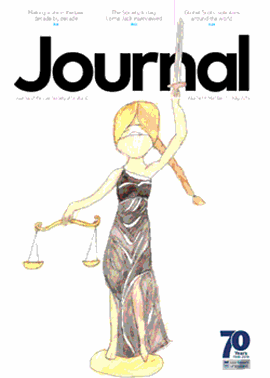A Lawyer’s Guide to Wellbeing and Managing Stress
Angus Lyon
PUBLISHER: ARK Group
ISBN: 9781783582211
PRICE: £30.00
Angus Lyon, the author of this book, is an English litigation solicitor with 35 years of experience. He is also a qualified psychodynamic counsellor. His expertise in the field of psychology adds a deeper dimension to the book: enabling the reader to reflect on psychological theories relevant to mental wellbeing and stress, contextualised by his understanding of working in the profession.
The main aim of the book is to provide “a comprehensive framework within which to think about wellbeing and stress”. Lyon achieves this aim remarkably well, given that the topic is so broad and multi-faceted. The book serves as a useful introduction to anyone who would like to explore this issue, and suggests practical exercises and ways of tackling the problem. As Lyon states, “wellbeing is a serious and endemic problem in the legal profession”
Lyon’s book is aimed at anyone in the legal profession, from trainee to partner level. With 10 short chapters in 125 pages, it is easy to dip in and out of this book one chapter at a time.
Cleverly structured into three separate sections, “Me”, “You” and “Do”, the book (i) expands on wellbeing from an individual’s point of view, (ii) covers how an individual interacts in two person relationships and groups, and (iii) acknowledges the impact of external pressures and events. In this way, the author examines the key areas in which to think about wellbeing.
One of the appealing aspects of this book is its three case studies. These help bring to life some of the common issues lawyers face and provide a positive message on how such problems can be overcome. For example, an anxious criminal barrister who finds calm in the practice of mindfulness, a young corporate associate who is supported by her LawCare mentor to tackle a difficult working relationship with a colleague, and a partner in his 50s who benefits from counselling at a time of serious changes in his work and family life.
The best, and most useful, chapter in the book is chapter 9, where Lyon suggests two quick mindfulness techniques. Each of these exercises only takes one unit of time to complete, so this should appeal to the time-conscious among us! They are short, simple exercises focused on breathing, sensations and thoughts. I think the exercise for chaotic situations is particularly useful, encouraging a lawyer to focus on their breathing, then the past, present and future happenings of the day, before returning to breathing once more. The benefit of these exercises is remaining calm and retaining a sense of perspective.
Lyon also gives some helpful advice in chapter 10 on how to have difficult conversations with colleagues about wellbeing. Listening is key to breaking the ice, and the importance of the person knowing that someone is there to help cannot be underestimated. Lyon argues that leaders and colleagues must be willing to share experiences and help others think about their anxieties. I wholeheartedly share Lyon’s view that there is a need for lawyers to work more collaboratively if we wish to enhance wellbeing within the profession.
While quite theoretical at times, this book provides a useful introduction to a variety of themes and concepts within the topic of wellbeing and managing stress, and includes some useful practical tips and exercises. I would encourage you to give the book a read and open up a discussion with your colleagues.
In this issue
- Private prosecution: the Glasgow Rape Case revisited
- The commercialisation of space
- Feminism: all is not what it seems…
- Retaking the narrative on complaints
- Reading for pleasure
- Opinion: Alan McIntosh
- Book reviews
- Profile
- President's column
- RoS riding to the four (hundred)
- People on the move
- Scot in the European hot seat
- When partners fall short
- Uber: a great gig?
- Brexit: the end of cross-border practice?
- Closing in: the gender pay gap rules
- Simple procedure – it's complicated
- When changing the defender is OK
- Solemn procedure: beware the changes
- Divorce and the new state pension
- Delivery of alcohol: a “game changer”?
- A tale of two "Budgets"
- Scottish Solicitors' Discipline Tribunal
- "One-shot" rule sees rejection income soar
- Law without frontiers
- CJEU decision supports LPP protections
- Society thank-you for STARTS support
- From the Brussels Office
- Law reform roundup
- Expertise plus: promoting a sector strength
- Paralegal pointers
- What to do about client interest?
- Still free to market?
- New year, new contact
- Ask Ash
- Paying homage to King Cash







